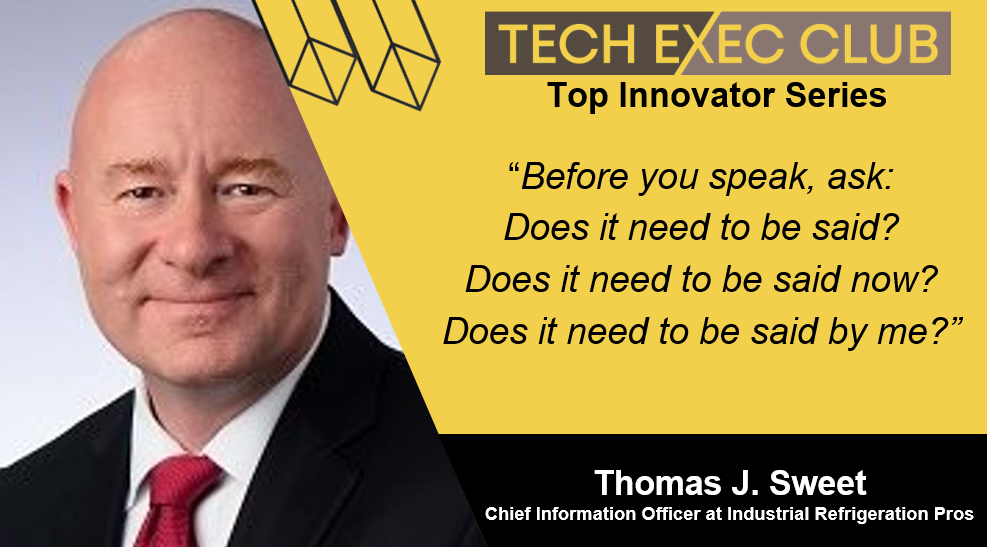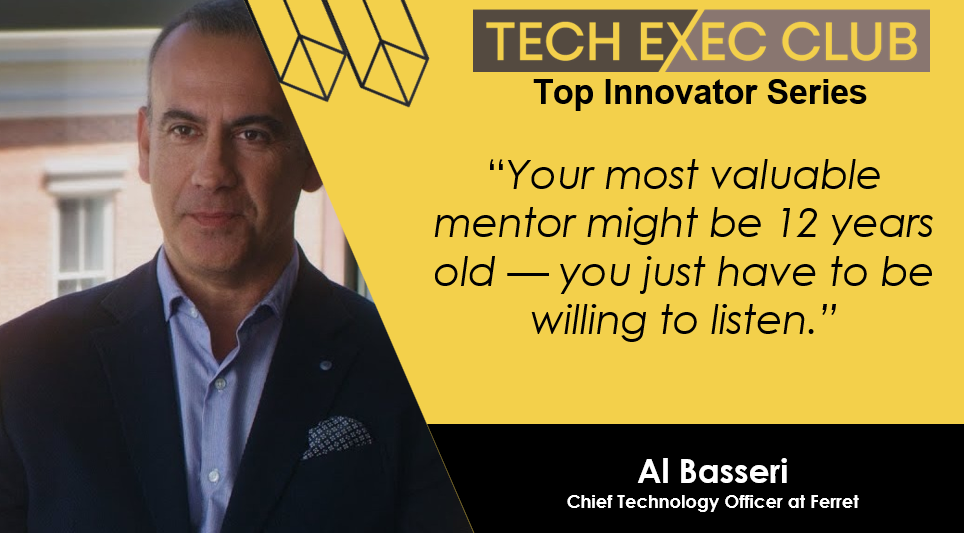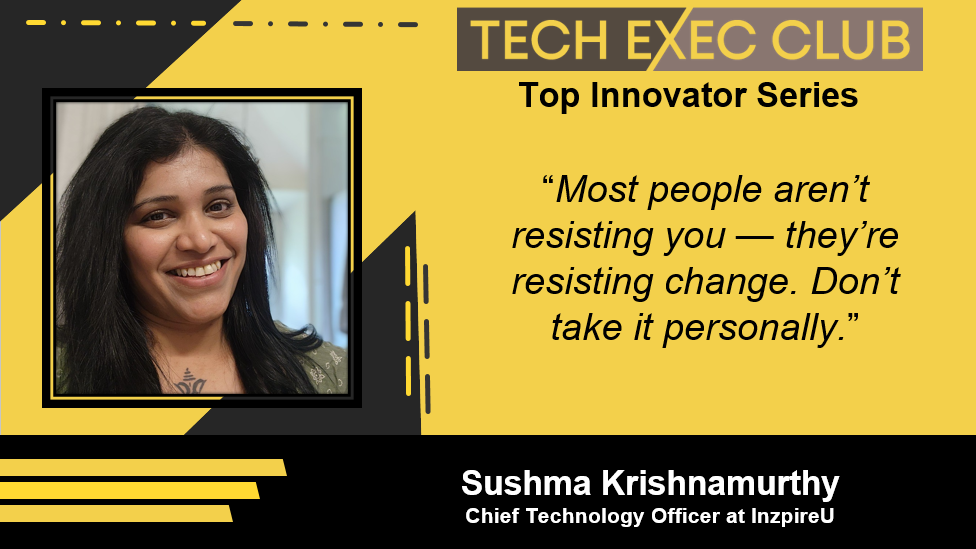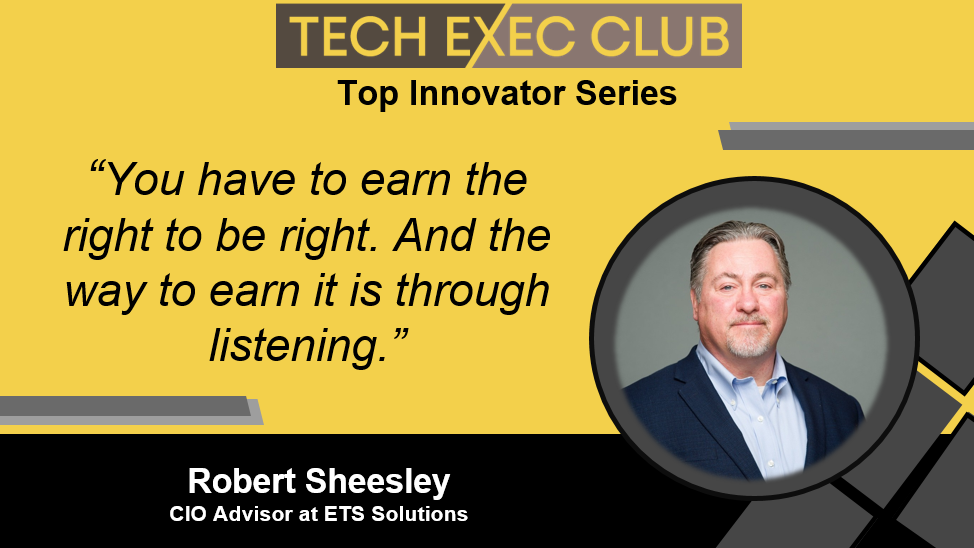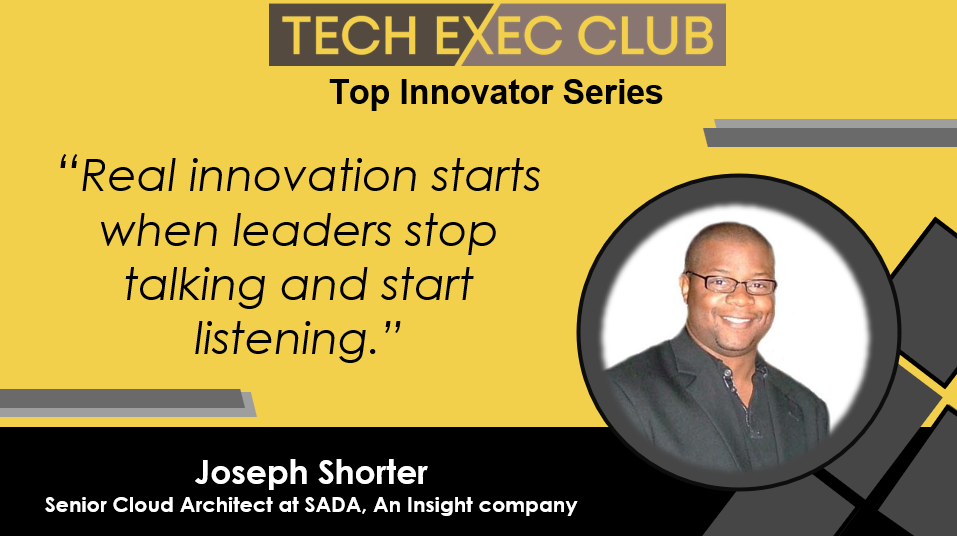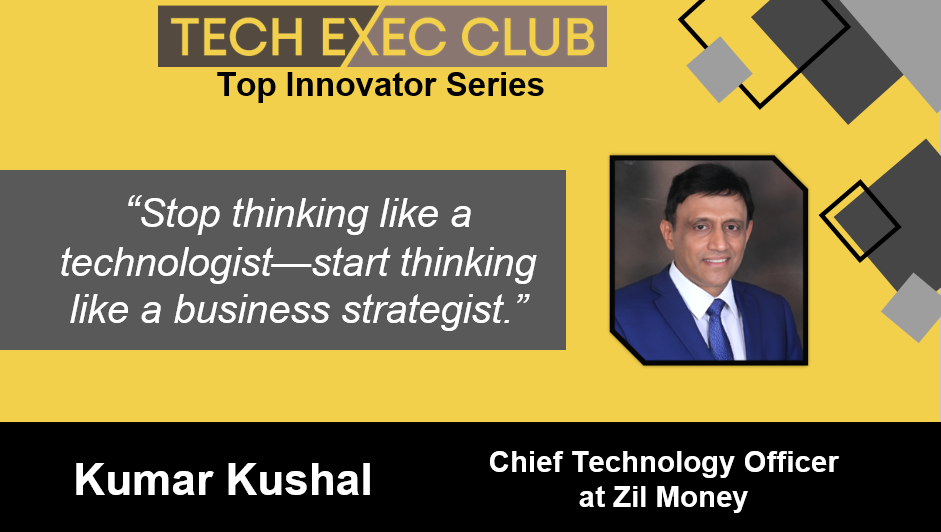In the world of tech leadership, it’s easy to lose touch with the very thing that once sparked your career: the technology itself. However, that connection is non-negotiable for Tom Sweet, CIO of Industrial Refrigeration Pros. With a career that began in civil engineering and evolved into technology leadership, Tom brings a rare blend of tactical know-how, strategic thinking, and human-centered leadership.
In this episode of the Top Innovator Series, hosted by Josef Martens, Tom shares his leadership journey with refreshing honesty — from the night shifts fixing IT outages to navigating complex cultural integrations after company acquisitions. He talks about leading by example, staying technical even at the executive level, and the power of influence over authority. He’s not just talking about certifications — he’s earning them alongside his team, building trust through shared effort.
But perhaps most compelling is his philosophy on innovation: that it requires space, time, consistency—and a bit of DIY spirit. Whether he’s prototyping an AI-powered search tool in his spare time or persuading internal stakeholders to adopt new ideas, Tom embodies grounded, value-driven leadership that prioritizes both business outcomes and human empathy.
This is the story of a modern CIO who hasn’t forgotten what it means to get his hands dirty and believes that the best leadership happens not above the team but with them.
Leading by Example: Staying Technical at the Top
While many CIOs proudly declare themselves “non-technical,” Tom Sweet takes the opposite stance. For him, staying connected to the technology isn’t optional—it’s essential.
“I still have six Microsoft certifications,” he says. “I contribute to authoring cybersecurity exams, stay active in industry groups, and even play around with Azure and open-source tools in my spare time.” Why? Because his role isn’t just about boardroom strategy — it’s about delivering business value through technology. And that requires understanding the tech firsthand.
Tom believes executive leaders set the tone. If he asks his team to upskill or embrace new tools, he’s doing it too — often ahead of them. “You can’t lead a tactical team if you’re non-tactical,” he says. “Otherwise, your team starts aspiring to be non-technical too, and suddenly you’ve got multiple layers of leadership with no one grounded in the work.”
That commitment builds credibility and trust. It keeps him relevant in conversations with developers and the boardroom. More importantly, it ensures that he can bridge the gap between complex technical solutions and real business impact—a skill that’s becoming more vital by the day.
For Tom, staying technical isn’t about doing others’ jobs—it’s about never losing touch with the reality of the work.
From Authority to Influence: Leading Without Barking Orders
Tom’s leadership style isn’t built on power or hierarchy. Instead, it’s built on influence, empathy, and shared growth.
Having started as an individual contributor and worked night shifts during system outages, he’s never forgotten the experience of being “on the ground.” That’s why he leads humbly — joining his team on certification journeys, contributing to projects, and always remaining approachable. “It builds trust,” he says. “The team knows I’m on the same path with them.”
But influence isn’t just about technical credibility. It’s about understanding how to motivate and relate to people, even when you don’t share their cultural or personal background. Tom reflects on managing global teams across Australia, South America, the UK, and the U.S. — each with its own cultural nuances, communication styles, and sensitivities. “You’ve got to build a big leadership toolbox,” he says. “And you’ve got to be willing to admit you don’t know it all.”
Tom is quick to admit that he’s still learning. “I don’t know if you ever fully master influence,” he says. “You just keep trying to get better.” It’s a humble but powerful perspective — and a reminder that leadership isn’t about giving orders. It’s about giving people reasons to follow.
One-and-Done Mentorship: The Hidden Power of Asking for Advice
Not all mentorships require a long-term contract. Sometimes, the most impactful guidance comes from a single, timely conversation—what Tom calls “one-and-done mentorship.”
Around 40, facing potential age discrimination and questioning his next move, Tom contacted CIOs and senior leaders. “I’d send a message saying, ‘I admire your career. Would you be willing to meet for 20 minutes to share some advice?'” To his surprise, many said yes.
One conversation in particular changed everything. The CIO of PDC Energy, Jim Golke, told Tom something that’s stayed with him for over a decade: “You’re no different than me. The only difference is I [Jim] have the title.” That simple statement helped shift Tom’s mindset. It made him realize leadership wasn’t some unattainable summit — it was a step he was already prepared to take.
He also learned not to take rejection personally. “Sometimes people just don’t have the capacity. That’s OK,” he says. But when it works, it works. A few minutes of shared wisdom can shift someone’s entire trajectory.
Tom’s advice? Don’t overcomplicate mentorship. Be specific, respectful, and open to learning. One conversation could unlock your next move.
Driving Innovation in the Real World: No Team? No Budget? No Problem.
Talk to Tom Sweet about innovation; you won’t hear buzzwords or flashy visions. Over the weekend, you’ll hear about Azure Search experiments, internal ChatGPT-style tools, and hacking together proofs-of-concept.
In a mid-sized company of 500 people, Tom doesn’t have the luxury of a 1,300-person IT department with a dedicated innovation team. Instead, innovation is built into his team’s DNA — and driven by curiosity, initiative, and business alignment.
“If we’re waiting for permission to innovate, we’re already too late,” Tom says. His approach? Explore new tools, run small pilots, and then bring prototypes to internal stakeholders with a clear message: “Here’s what I built. Would this be useful to you?”
This grassroots method forces alignment between technology and business value. Nothing gets funded unless it solves a real problem, shifting innovation from a centralized, abstract function to something distributed and organic.
“Innovation has to be consistent,” Tom adds. “It’s not something you only invest in when times are good.” He’s seen too many companies cut innovation first during downturns — a move that erodes future growth.
For Tom, innovation isn’t about resources. It’s about mindset. It’s about leading with curiosity — and following through with proof.
Culture Is the Hardest Code to Change
Tom has tackled complex challenges throughout his career, but he’s clear about the hardest one: cultural change.
Whether it’s integrating teams across different countries, navigating the unspoken tensions between Australian and American work styles, or merging eight acquired companies — each with its version of “how things are done” — the human side of transformation is always the most complex.
“It’s like asking eight families to change their spaghetti sauce recipe after 30 years,” he says. “Everyone has their way of doing things. And now, we’re asking them to change — across IT, HR, cybersecurity, everything.”
For Tom, successful culture change depends on empathy, storytelling, and strategic influence. When implementing tighter cybersecurity standards, he didn’t just issue mandates — he explained the why, citing actual phishing attacks and stories of competitors who didn’t get lucky.
It also requires time. “You have to understand that what feels like resistance is sometimes just habit,” he says. And the more globally distributed or acquisition-heavy an organization becomes, the more those habits multiply.
The solution isn’t technical—it’s human. It’s listening, communicating, and leading with patience. Unlike code, people don’t compile on command.
Tom Sweet’s leadership journey is filled with real-world lessons that any aspiring or current tech leader can apply — regardless of company size or budget. His blend of tactical knowledge, empathy, and action-oriented innovation offers a practical roadmap for CIOs, CTOs, and team leaders. Here’s how to bring his approach into your leadership playbook:
1. Stay Connected to the Tech — Even as an Executive: Maintain a hands-on understanding of the tools and systems your team works with. Keep learning: pursue certifications, contribute to technical communities, and experiment with emerging technologies. Don’t delegate understanding — lead by doing, especially when asking your team to evolve.
2. Lead with Influence, Not Authority: Build trust by being part of the journey, not just directing it. Practice empathy across roles, cultures, and personality types. Continuously expand your “leadership toolbox” — especially when managing global or cross-functional teams.
3. Seek and Offer One-and-Done Mentorship: Reach out to leaders for short, focused guidance — don’t underestimate the impact of a 20-minute conversation. Be specific in your ask: show respect for their time and demonstrate that you’ve done your homework. When you’re in a position to give back, offer the same brief but powerful mentorship moments to those coming up behind you.
4. Make Innovation Part of the Day-to-Day: Set aside time for experimentation — innovation doesn’t happen accidentally. Prototype small ideas before asking for resources — let the business see them before you sell them. Engage your team and internal clients early. Ask: “Would this be useful to you?” before going all-in.
5. Commit to Culture Change — for the Long Haul: Don’t underestimate the emotional complexity of change, especially across acquisitions and geographies. Use real-world stories and analogies to make policy and tech shifts more relatable and digestible. Lead with patience and consistency. Culture doesn’t change overnight — but with enough care, it evolves.
6. Practice Communication Caution: Before jumping into every debate or disagreement, ask yourself:
- Does it need to be said?
- Does it need to be said right now?
- Does it need to be said by me?
These three filters will help you lead with clarity and avoid unnecessary conflict.
Tom Sweet isn’t your typical CIO. He’s not chasing titles or hiding behind buzzwords — he’s leading from the front, staying in the trenches with his team while never losing sight of the boardroom. With a foundation in civil engineering, a passion for technology, and a deep belief in delivering business value through tech, Tom has carved out a leadership style equal to tactical and human.
Whether prototyping AI tools in his spare time or navigating complex post-acquisition culture shifts, Tom approaches every challenge with humility, curiosity, and resolve. His story is one of constant reinvention—not just for himself but also for the teams and organizations he leads.
But perhaps what truly makes Tom stand out is his commitment to influence over authority, innovation over ego, and people over process. He reminds us that leadership isn’t about being the loudest voice in the room—it’s about knowing when to speak, what to build, and how to lift others along the way.
As technology accelerates and organizations face increasing complexity, voices like Tom’s are more valuable than ever. He’s a model for modern CIOs who lead with their hands, heads, and, most importantly, hearts.
Want to hear Tom Sweet’s insights firsthand? Watch the full, live podcast interview [click here]
